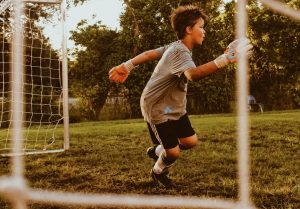
How does a bone get longer? Growth plates. They are responsible for bone growth. Children can experience a growth plate fracture with a traumatic injury. Read along to learn more.
Growth Plates
Each long bone in the body has a growth plate. The growth plate is the area where bones get longer. After children reach skeletal maturity, their growth plates close and no more vertical growth occurs.
The growth plate itself is made up of an area of cartilage with rapid turnover. This area turns cartilage into bone and allows the bone to elongate. Most long bones in the body have two growth plates. There’s one plate at the top of the bone and one at the bottom. Long bones like the femur (the thigh bone), the humerus (the upper bone in the arm), and the tibia (the shin bone) all have two growth plates.
However, growth rates aren’t equal in all areas of the body. For instance, the greatest area of growth in the leg occurs through the the growth plate in the femur closest to the knee joint. Growth plates also close earlier or later in different parts of the body. For example, one of the last growth plates to close is in the collar bone, while the first to close is in the elbow.
Additionally, girls’ growth plates tend to close around age 12-14 years of age while boys’ growth plates close between 16-17 years of age. The hormones that are primarily responsible for signalling growth plate closure differ here. Estrogen is the signal for girls, while testosterone is the signal for boys.
A Growth Plate Fracture
A growth plate can be injured from a traumatic event. Trauma can cause a fracture to go through the growth plate, causing it to partially or completely close prematurely. If part of the growth plate partially closes due to trauma, the remaining portion of the bone can grow crooked. If the growth plate completely closes early, the bone can actually end up being shorter than the corresponding bone on the other side of the body.
It’s not just trauma that can impede a growth plate. Repetitive use injuries can also cause damage to growth plates. Typically, though, this type of injury does not cause permanent damage to a growth plate.
If you experience a growth plate fracture, you should see a doctor. It is very important to make sure the growth plate is lined up in an anatomical position. This will improve the chances that the growth plate will not prematurely close from the fracture.
If you are struggling with a growth plate injury, Orthopaedic Specialists can help! To schedule an appointment with Dr. Grossfeld and the other experts at Orthopaedic Specialists, call 502-212-2663 today.

Recent Comments